After Anthony van Dyck, 'Portrait of the Artist', about 1750-1825
About the work
Overview
A young man looks out at the viewer with a piercing gaze and provocative expression. With an elegant hand gesture he points towards his chest, alluding to the fact this image is in fact a self portrait. His lips are parted, as if he is about to introduce himself – this is the Flemish painter Anthony van Dyck.
The National Gallery’s picture is a reduced, late eighteenth- or early nineteenth-century copy of Van Dyck’s half-length original, which is now in the Metropolitan Museum of Art, New York. This is one of three closely related self portraits Van Dyck painted in the years around 1620.
Anthony van Dyck would have been about 20 years old here, and acutely conscious of his new-found fame across Europe – something reflected in his highly self-conscious self presentation. It is thought that the original was made while Van Dyck was in Antwerp or, most likely, during his first visit to London in the winter of 1620–1, when he worked at the court of King Charles I.
Key facts
Details
- Full title
- Portrait of the Artist
- Artist
- After Anthony van Dyck
- Artist dates
- 1599 - 1641
- Date made
- about 1750-1825
- Medium and support
- oil on canvas
- Dimensions
- 57.2 × 49.5 cm
- Acquisition credit
- Bought, 1871
- Inventory number
- NG877
- Location
- Not on display
- Collection
- Main Collection
- Previous owners
Provenance
Additional information
Text extracted from the catalogue entry in Christopher Baker and Tom Henry, ‘The National Gallery: Complete Illustrated Catalogue’, London 2001; for further information, see the full catalogue entry.
Bibliography
-
1904W. Armstrong, The Peel Collection and the Dutch School of Painting, London 1904
-
1954M. Goldsmith, The Wandering Portrait, London 1954
-
1988E. Larsen, The Paintings of Anthony van Dyck, Freren 1988
-
2001
C. Baker and T. Henry, The National Gallery: Complete Illustrated Catalogue, London 2001
About this record
If you know more about this work or have spotted an error, please contact us. Please note that exhibition histories are listed from 2009 onwards. Bibliographies may not be complete; more comprehensive information is available in the National Gallery Library.

























